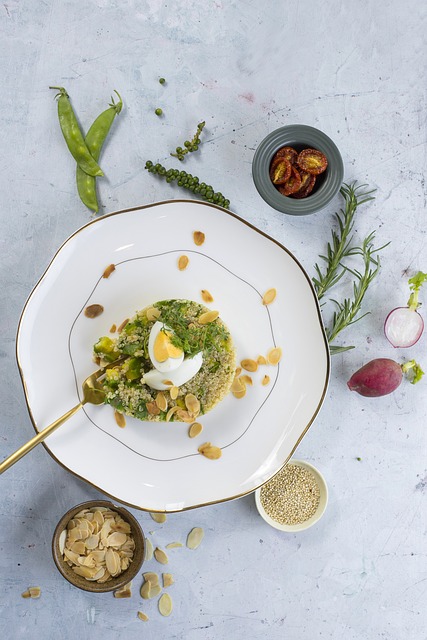It’s common practice to advise soft food diets to speed up recovery from illnesses or surgeries. Reduce your intake of difficult or spicy foods and opt instead for soft, easily digested foods. When you’re well again, you ought to be able to eat normally again.
In order to aid patients in recovering from specific medical operations or episodes of disease, doctors frequently prescribe particular diets.
Soft diets, which consist of soft and easily digestible foods, are frequently utilized in clinical settings.
If a soft diet is recommended for you, you might be wondering what to eat and what to avoid, as well as why you were placed on this diet in the first place.
Everything you need to know about soft food diets is included in this article.
Table of Contents
Why is a soft food diet recommended, and what does it entail?

People who are intolerant of typically textured or highly seasoned foods are advised to follow soft food diets, which are composed of soft, readily digestible foods.
These diets are often advised by medical professionals to patients recovering from surgery or with certain medical issues.
Soft food diets are utilized in the home, in long-term care institutions, and in hospitals, among other places. The diets are usually followed for brief intervals of a few days to a few weeks, while longer durations may be necessary in some situations.
Soft diets are frequently used to treat dysphagia, a general term for swallowing difficulties. Individuals with neurological problems, neurodegenerative diseases, and elderly persons frequently experience dysphagia.
The National Dysphagia Diet (NDD), which comprises multiple tiers of dysphagia diets, was developed in 2002 by the Academy of Nutrition and Dietetics:
- NDD Level 1 — Dysphagia-Puréed: homogeneous, pudding-like, texture that requires minimal chewing
- NDD Level 2 — Dysphagia-Mechanically Altered: cohesive, wet, semisolid meals that need to be chewed
- NDD Level 3 — Dysphagia-Advanced: soft foods that require more chewing ability
- Regular: all foods allowed
The goal of texture-modified diets is to lower the risk of pneumonia and aspiration in individuals with dysphagia; nevertheless, preliminary findings indicate that alterations to food texture may affect quality of life and lead to undernutrition, underscoring the need for additional research.
Soft diets are also recommended for those who have recently had jaw or oral surgery that has impacted their ability to chew food, in addition to dysphagia.
For instance, a soft diet may be necessary to encourage recovery for patients who have had dental implants, extensive jaw surgery, or wisdom tooth extractions.
In order to promote better healing of the digestive system in patients recovering from gastrointestinal illnesses or undergoing abdominal surgery, soft diets are also utilized as a transitional diet between complete liquid or puréed diets and regular foods.
Soft diets can also be recommended for patients who are too weak to eat ordinary foods, such as those receiving chemotherapy, or who have lost sensation in their mouth or face or who have had a stroke and are unable to move their lips or tongue.
While there is variation in the usage of soft food diets in clinical and home settings, the majority of short-term diets are bland and low in fiber to facilitate easy digestion and the comfort of the dieter.
Remember that some people require longer lengths of time on soft food diets. In these situations, the diet might be more delicious and higher in fiber than short-term soft diets.
Items that fit with a soft food diet

When a person cannot take highly seasoned or regular-textured foods, which can happen for a variety of reasons, soft diets are utilized.
Puréed diets are not the same as soft diets. Purée diets are completely different from soft food diets, even though puréed meals are permitted.
In general, foods that are soft and simple to ingest and digest should make up soft diets.
These are a few foods that are suitable for most soft diets:
- Vegetables: Broccoli florets that are nicely cooked, soft cooked carrots, green beans, chopped cooked spinach, and cooked zucchini without seeds,…
- Fruits: bananas, peeled apples or applesauce, avocado, cooked, peeled ripe peaches, cooked pears, puréed fruits, ….
- Dairy products: cottage cheese, yogurt, soft cheeses, pudding, frozen yogurt, etc. Lower fat dairy products are typically recommended for people recovering from gastrointestinal surgery or illness.
- Eggs: egg salad, cooked whole eggs or egg whites, egg salad, …
- Miscellaneous: gravies, sauces, smooth nut butters, unseeded jellies and jams
- Grains and starches: mashed potatoes, sweet potatoes, butternut squash, cooked cereals like cream of wheat, soft, moistened grains such as farro or barley, moistened pancakes, soft noodles, etc.
- Soups: puréed or broth-based soups with soft-cooked vegetables
- Drinks: water, tea, protein shakes, and smoothies
- Meat, poultry, and fish: finely chopped or ground moistened poultry, soft tuna or chicken salad (without chopped raw vegetables or fruit like celery or apples), baked or broiled fish, soft tofu, etc.
Remember that soft food diets come in different forms based on the disease they are intended to address. Certain foods may not be tolerated by some individuals with additional limits for a variety of reasons.
Therefore, if you’re following a soft diet and have issues about what foods you’re allowed to eat, it’s always advisable to see your healthcare provider or a qualified dietitian.
Items to omit from a soft food diet
A soft food diet calls for the avoidance of several foods. Foods that are difficult to chew or that are difficult to digest ought to be limited. Generally, foods that are extremely acidic or spicy are also forbidden.
On soft diets, the following foods are typically restricted:
- Fruits: fresh fruits (with some exceptions like avocados and bananas), fruits with peels and seeds, highly acidic fruits like lemons and limes
- Meat, poultry, and fish: tough cuts of meat, fried fish or poultry, whole cuts of meat or poultry, high fat processed meats, such as bacon, soups or stews with tough chunks of meat
- Vegetables: raw vegetables, deep-fried vegetables, vegetables with seeds or rinds
- Grains and starches: hard crackers, chewy or crusty breads, high fiber breads and grains, such as seeded breads and shredded wheat, French fries, popcorn
- Dairy products: hard cheeses, cheeses with nuts or dried fruit in them, yogurt with added ingredients, such as chocolate or nuts
- Spicy or irritating foods: hot peppers, tomato sauce, gas-promoting foods, such as cabbage and beans, tabasco sauce
- Fats: nuts, coconut flakes, crunchy nut butters
- Miscellaneous: seeded jams or jellies, chewy candies
- Beverages: alcohol, caffeinated beverages may be restricted as well depending on the condition being treated
Be aware that additional limitations can be advised by your healthcare professional based on your specific medical needs. It’s critical to comprehend both your unique nutritional requirements and the recommended diet.
Ideas for soft food diet meals and snacks

Any limited diet can be difficult to stick to, especially when a lot of wholesome items, like raw fruits and vegetables, are prohibited.
Even yet, there are plenty of delectable meal and snack options available for folks on soft diets.
The following are some meal options that persons on soft diets can consume:
Ideas for Breakfast
- Eggs scrambled and avocado slices
- Creamy cashew butter and sautéed peaches are atop a dish of cream of wheat.
- Eggs, goat cheese, minced spinach, and butternut squash are combined to make this crustless quiche.
- Smooth almond butter, banana or canned peaches, seedless blueberry jam, and unsweetened yogurt are combined to make a yogurt parfait.
Ideas for Lunch
- Tuna or chicken salad without any veggies
- Chicken soup featuring cooked vegetables, soft noodles, and tiny pieces of soft, shredded chicken
- Feta, soft vegetable salad, and couscous
- Burger made of juicy salmon and avocado
Ideas for Dinner
- Ground beef or tofu-topped meatloaf served with mashed sweet potatoes
- Mashed potatoes with cheese or soft-cooked beets and carrots served with grilled fish
- Sautéed green beans, boiled rice, and tender chicken
- Turkey ground and used to make shepherd’s pie
Many persons on a soft diet may also choose to include one or more snacks during the day in addition to their meals.
Among the suggestions for snacks are:
- Cottage cheese paired with soft canned or cooked fruit
- Yogurt with cooked peeled apples and cinnamon
- Grain soup and vegetable
- Smooth nut butter, fruit, and protein powder combined to create well-blended smoothies
- Mashed avocado in an egg salad
- Banana bread or soft pumpkin bread with creamy almond butter
- Pureed soups made with vegetables, like butternut squash soup
- Banana boats topped with creamy, pure peanut butter
All meals and snacks should aim to be as well-balanced as possible and should contain foods high in protein, particularly for individuals who have recently had surgery or who require more nutrients, including those who have cancer.
Good advice for those following a soft diet

While eating only soft foods can be challenging, the following advice might make it simpler to stick to this kind of diet:
- Make wholesome choices. Even though soft, sugary meals like cakes and pastries might seem good, it’s better for your health to make sure you’re eating foods like fruits, vegetables, and proteins. Select a range of nutrient-dense foods.
- Season your food. Making meals more appetizing can be accomplished by using herbs and other mild flavors.
- Focus on protein. For those recovering from surgery or undernourished, it is extremely crucial to include protein in every meal and snack.
- Eat small, consistent meals. When on a soft diet, it is advised to have several little meals throughout the day as opposed to one substantial meal.
- Chew everything well and slowly. Many persons on soft diets, especially those recovering from abdominal surgery and those with neurological disorders, find it vital to chew their food completely and take their time when eating. In between bites, take tiny sips of drink while sitting up straight.
- Schedule your meals in advance. It might be challenging to find meals that fit into a mechanical soft diet. Mealtimes can be easier and less stressful if meals are planned in advance.
- Keep appliances handy. Recipes that are delicious and approved by soft diets can be made with food processors, blenders, and strainers.
Soft diets are typically employed as stopgap measures until a person is well-suited to resume eating a regular-consistency diet.
The duration of a soft food diet will be prescribed by your healthcare provider; any additional relevant information can be obtained from a trained dietitian.
Consult your healthcare physician if you have any queries or concerns with sticking to a soft food diet or readjusting to a regular-consistency diet.
The final word
Soft food diets are frequently recommended by medical professionals to aid in patients’ recovery from sickness and surgery as well as to facilitate easy chewing and digestion.
It’s crucial to select soft, readily digested foods when on a soft food diet and to stay away from tough-to-chew or digest items. Foods that are spicy or may cause irritation should also be avoided.
Soft food diets might be challenging to adhere to, but they are meant to aid in recuperation, so it’s critical to do as directed by your healthcare professional and wait until you’re ready to resume a regular diet.
